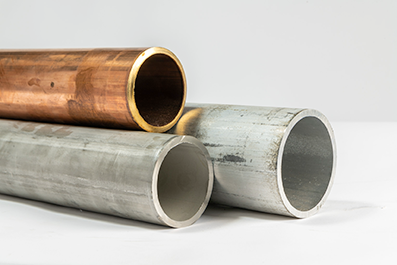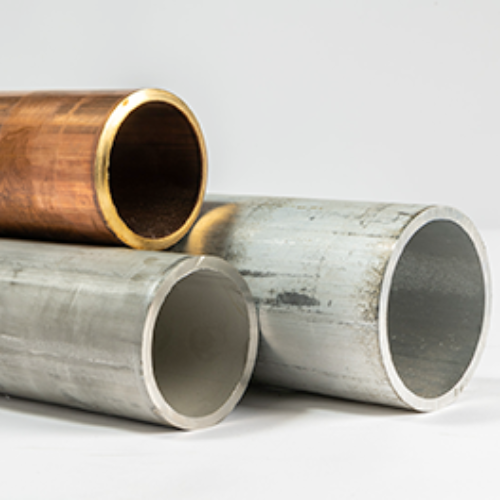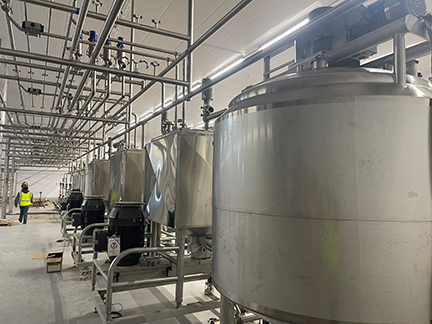There are a range of factors, materials, types and specs used with different types of pipe, as well as similar materials such as tubing and hosing. In this post, we'll get into what defines it, as compared to other materials, talk about different schedules, different types of applications and similar areas of concern.

Generally speaking, pipe is a length of usually circular material that extends a significantly longer distance than its diameter, which is capable of passing gas, air, or liquids over long distances. It's typically made of a stiff material, with piping materials including:
Commonly used in homes and for gas lines, using a threaded system for connections.
Often used in water utilities and larger water mains to provide long-term durability.
Corrosion resistant, lightweight and inexpensive, but is very intolerant of freezing.
Tends to be lighter in wall thickness and durability compared to PVC pipe, but also tends to hold up better to heat.
Provides a strong connection and is often run from longer tubing to run longer distances.
Available in several alloys. The 300 series, types 304 & 316 are the most commonly used, which are austenitic chromium nickel alloys.
Good for water applications. It is an excellent resource for resisting dezincification. Brass is resistant to season cracking and pitting.
Good machinability and is excellent for welding. Aluminum is extruded and has high versatility. 
No matter what type of pipe you're using, it's made the same way. A material is heated and fed into a die, through which it is extruded. As it cools, it hardens, making a long, hollow tube capable of moving water, air or gas across long distances.
However, the piping material will dictate a number of more intricate steps in the process, such as annealing, handling, and other aspects of the manufacturing process. Pipes are generally in limited lengths of 10', 20', or similar measurement, but in the case of some types of tubing and specialty piping, they may be significantly shorter or longer.
Pipes form a solid connection at a fitting, which is often the point where a pipe may join another, branch off, or change direction from the original run of pipe. Because it creates a strong, solid, sealed connection, the pipe is able to carry water, air, or gas up to its rated pressure. However, if it exceeds the pressure, it's entirely possible that it may rupture, which is why it's wise to add in a margin of error when selecting the pipe schedule number for a project.
Pipe can be installed in many ways, but it's generally much easier to manage the process during construction, prior to the walls being closed in. Always consult your project team prior to installation.
Though some types of welded pipe are available on the market, many types of seamless pipe are available. Welded is traditionally ERW (Electric Resistance Welded) where an electrical current at a high frequency is passed between the edges, melted and fused together.
By comparison, a seamless pipe is formed from billet. The billet is pierced through the center which is then rolled until diameter and schedule are met. The seamless pipe process allows it to hold up well to the pressure that it's rated for.
If your clients are wondering what schedule 40 pipe is, or what schedule 80 pipe is, here are the answers you need to know. Pipe schedule is a calculation to determine the wall thickness of a particular type of pipe, which often controls its capability to withstand a specific level of pressure. To compare between the schedule number of 10, 40, and 80, we'll take a quick look at 1" pipe. With 1", schedule 10 pipe is 2.77mm thick, schedule 40 pipe is 3.38mm thick, and schedule 80 pipe is 4.55mm thick.
The schedule 40 pipe can handle up to 450 PSI in pressure while the schedule 80 pipe can handle up to 630 PSI. Under many codes, schedule 10 pipe is only used for drain lines, due to its much thinner walls and inability to handle significant pressure. For this reason, you'll rarely see threaded connections for schedule 10 pipe, because its walls are too thin, compromising the joint's ability to stay connected.
 Which Pipe is Best for Plumbing & Industrial Applications?
Which Pipe is Best for Plumbing & Industrial Applications?The reason why there are so many types of piping materials available on the market is that they serve so many purposes. Some of these were mentioned in the bullet list of materials above, but you'll need to guide your clients into selecting the right materials for their application. For example, the following alloys can be found in these applications:
Stainless steel is used primarily in residential and commercial plumbing and industrial applications (pharmaceutical & chemical manufacturing, pressure vessels, medical equipment, marine equipment, food & beverage processing plants, and more).
Brass is used primarily in commercial and residential applications, light irrigation, industrial distribution, architecture and construction.
A pipe is measured using a micrometer or similar precision measuring instrument. Wall thickness refers to the thickness of the wall, or the difference between the outer and inner diameter of the pipe, divided by half. It's important, as mentioned in the discussion about different pipe schedules above, because it impacts the pipe's ability to withstand pressure without bursting.
Authors: Authors: Kimberly Wallingford, Director of Marketing and Marcus Estrella, Director of Product Line Management
3/28/2025 1:46:32 PM